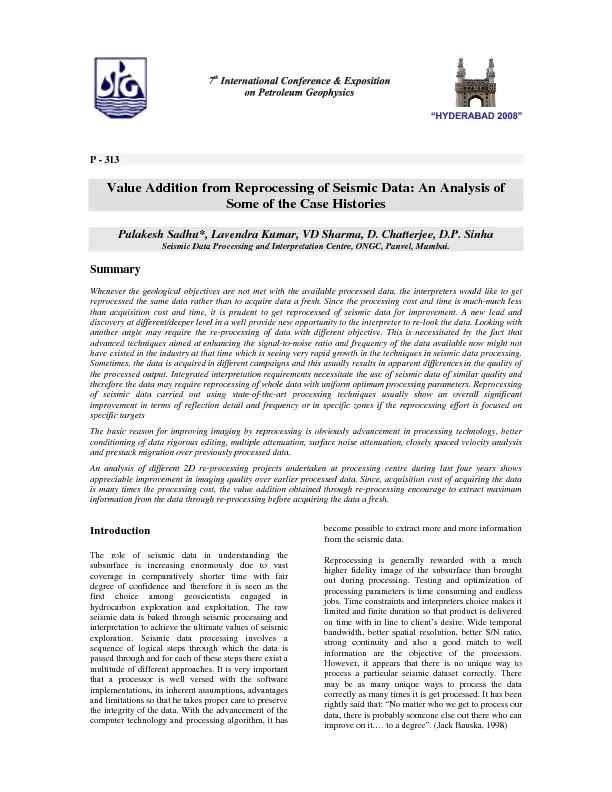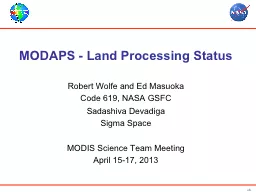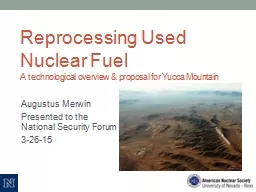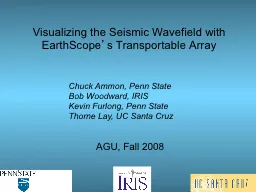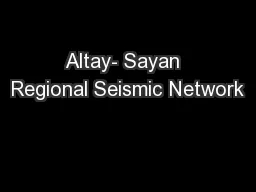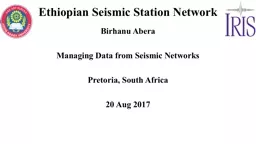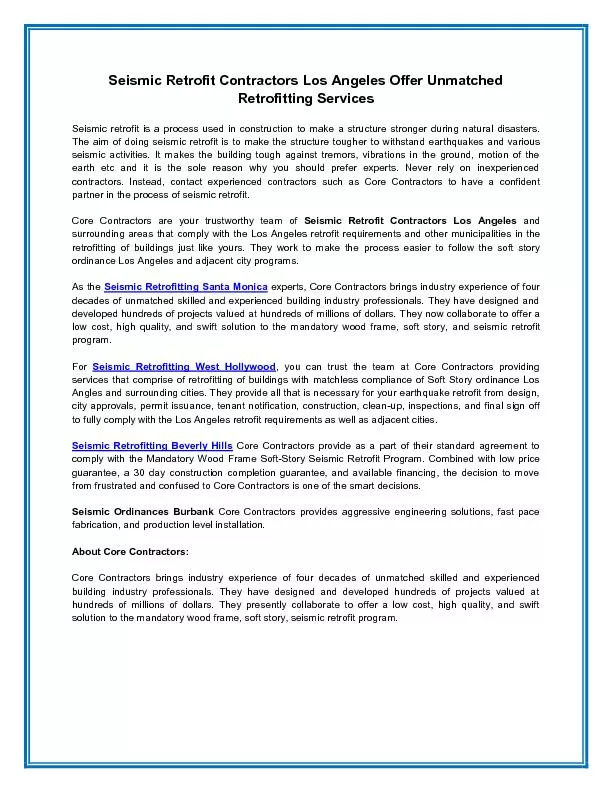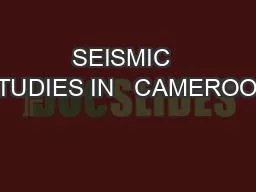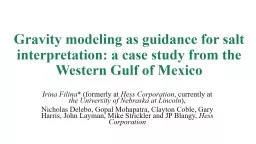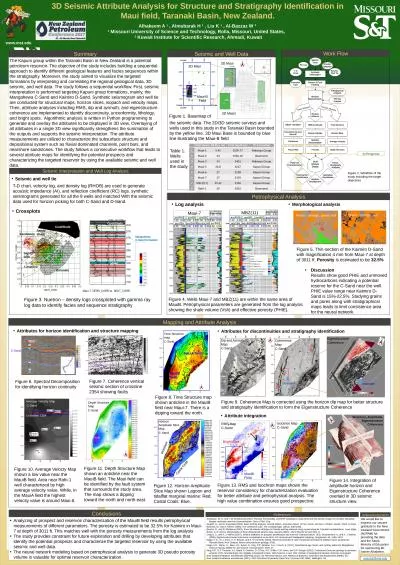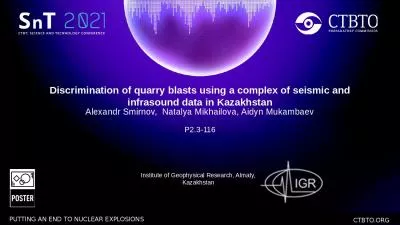PDF-Value Addition from Reprocessing of Seismic Data: An Analysis of ...
Author : pasty-toler | Published Date : 2017-11-24
P 313 Some of the Case Histories Pulakesh Sadhu Lavendra Kumar VD Sharma D Chatterjee DP Sinha Seismic Data Processing and Interpretation Centre ONGC Panvel MumbaiWheneverthe
Presentation Embed Code
Download Presentation
Download Presentation The PPT/PDF document "Value Addition from Reprocessing of Seis..." is the property of its rightful owner. Permission is granted to download and print the materials on this website for personal, non-commercial use only, and to display it on your personal computer provided you do not modify the materials and that you retain all copyright notices contained in the materials. By downloading content from our website, you accept the terms of this agreement.
Value Addition from Reprocessing of Seismic Data: An Analysis of ...: Transcript
P 313 Some of the Case Histories Pulakesh Sadhu Lavendra Kumar VD Sharma D Chatterjee DP Sinha Seismic Data Processing and Interpretation Centre ONGC Panvel MumbaiWheneverthe geological. IN. FLORICULTURE. DR. D.K.GUPTA. IIIM JAMMU. What is value addition . To increase the profit value and consumer attraction of an commodity.. This can be done by . changes in genetics . and by . Robert Wolfe and Ed Masuoka. Code 619, NASA GSFC. Sadashiva Devadiga. Sigma Space. MODIS Science Team Meeting. April 15-17, 2013. Land Processing Status. Land C5 Forward processing is typically 1-2 days behind real time.. A technological overview & proposal for Yucca Mountain. Augustus Merwin. Presented to the National Security Forum. 3-26-15. There is NO “Waste” . Waste is a chemistry term for a product that has been burned to completion. ’. s Transportable Array. AGU, Fall 2008. Chuck Ammon, Penn State. Bob Woodward, IRIS. Kevin Furlong, Penn State Thorne Lay, UC Santa Cruz. EarthScope USArray Transportable Array. 2004. 2013. The Transportable Array will occupy 1600 sites across the contiguous US. Seismic Instruments. and Data Acquisition Systems at MSSP. Waqas. Ali, Jr. Engineer. Micro Seismic Studies Programme. . . Government of Pakistan. Contents. Introduction. MSSP Seismic Network—Map. Yesterday..Today..Tomorrow. Cathy Rocco, MSN, RN, CNOR, . Sr. Clinical Education Consultant . . Objectives. Discuss current organizational guidelines and standards relevant . to flexible endoscope . Altai-. Sayan. Branch of Geophysical Survey Siberian Branch of the RAS. Geophysical Survey of . Siberian Branch of the RAS. Three seismological branches with regional scale seismic networks:. Altay-. Birhanu. . Abera. Managing . Data from . Seismic Networks. Pretoria. , . South Africa. 20 Aug . 2017. Outline. Introduction. M. ap of the current . ESSN . network. Data Acquisition and processing. D. Workshop Session 4. January 31, 2013. Some stuff on the web….. From Compliance Firm website:. “Reprocessing. . is taking a material (in-spec or . out-of-spec) and . reintroducing it to an existing (validated) process. Core Contractors are your trustworthy team of Seismic Retrofit Contractors Los Angeles and surrounding areas that comply with the Los Angeles retrofit requirements and other municipalities in the retrofitting of buildings just like yours. WELCOME . TO THE PRESENTATION ON THE CAMEROON SEISMIC NETWORK. PRESENTATION OF THE CAMEROON SEISMIC NETWORK . . MOUZONG PEMI MARCELIN. Department. of . Physics. , . University. of . Yaounde. 1. Mexico. Irina Filina. * (formerly at . Hess Corporation. , currently at . the University of Nebraska at Lincoln. ), . Nicholas . Delebo, Gopal Mohapatra, Clayton Coble, Gary Harris, John Layman, Mike Strickler and JP Blangy, . Alhakeem A . 1. , . Almubarak. H . 1. , Liu K . 1. , Al-. Bazzaz. W . 2 . 1. Missouri University of Science and Technology, Rolla, Missouri, United States, . . 2. Kuwait Institute for Scientific Research, Ahmadi, Kuwait. infrasound data in Kazakhstan. Alexandr Smirnov, Natalya . Mikhailova. , Aidyn . Mukambaev. Institute of Geophysical Research, Almaty, Kazakhstan. P2.3-116. P2.3-116. ABSTRACT. The monitoring system of NNC RK comprises five seismic arrays, eight 3-component stations, and three infrasound arrays. Every year, the network in Central Asia registers and processes some 20,000 seismic events. Among the total bulk of such processed events, about 5,000 events are blasts of different characters. Mainly, they are industrial quarry blasts. The technique has been developed and technology has been generated for recognition of the character of the event based on the set of seismic and infrasound data, which can also increase the accuracy of blast localization significantly on account of reliable reference to the specific quarry. For twelve quarries, template seismic waveforms have been produced. It has been shown that a record of the .
Download Document
Here is the link to download the presentation.
"Value Addition from Reprocessing of Seismic Data: An Analysis of
..."The content belongs to its owner. You may download and print it for personal use, without modification, and keep all copyright notices. By downloading, you agree to these terms.
Related Documents

